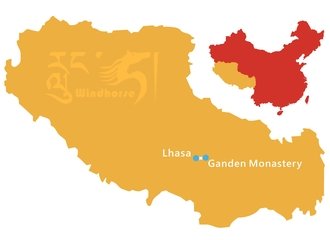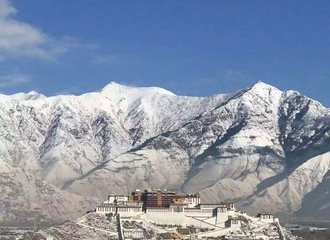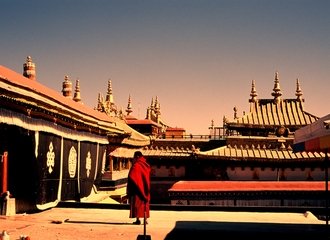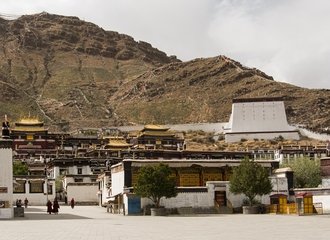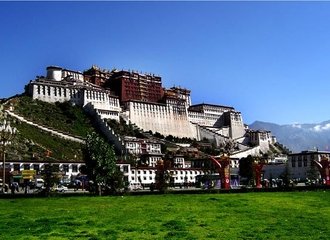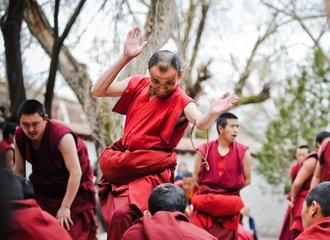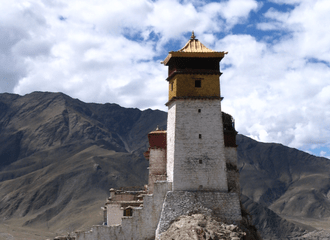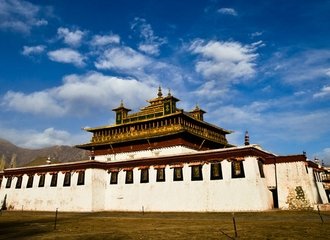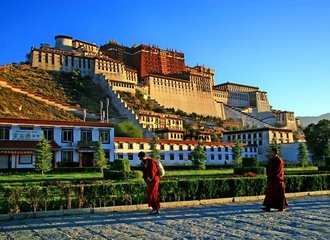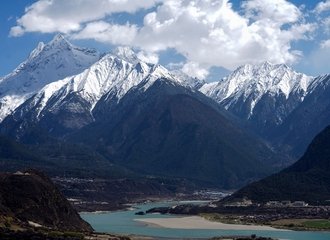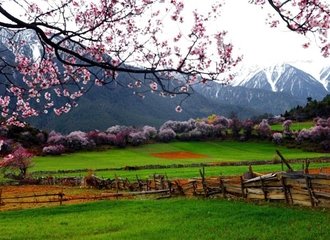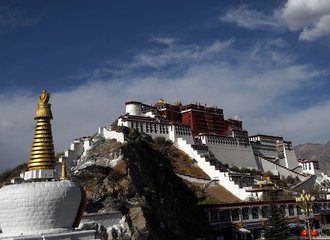Longmen Grottoes Luoyang
Longmen Grottoes, the largest and most outstanding collection of Chinese stone carving, are scattered into the cliff sides of Mount Xiang and Mount Longmen, about 15km south of Luoyang downtown. Stretching more than 1km along the west and east banks of the Yi River, this huge complex holds over 2,300 caves and niches which involves 110,000 Buddhist statues, 60 stupas, and 2,800 stele inscriptions. Originated from the late Northern Wei Dynasty and prevailed during the Tang Dynasty, these works represent the finest examples of Buddhist art in China. Nowadays, as one of the four most famous grottoes in China, together with Mogao Grottoes in Dunhuang, Yungang Grottoes in Datong, and Maijishan Grottoes in Tianshui, Longmen Grottoes serves as a window into the most brilliant period of Buddhist culture of Ancient China. It's a must-see place on most travelers' China tour.
English Name: Longmen Grottoes.
Chinese Name: 龙门石窟.
Location: Longmen Avenue, Longmen Town, Luoyang City, Henan Province, China.
Year Consecrated: AD 493.
Recommended sightseeing time: Half-day.
Entrance ticket: CN¥ 90 per person.
Opening hours:
- 08:00 - 18:00 from February 1st to March 31st;
- 08:00 - 18:30 from April 1st to October 7th;
- 08:00 - 18:00 from October 8th - October 31st;
- 08:00 - 17:00 from November 1st - January 31st.


What to see at Longmen Grottoes
Longmen Grottoes' admission includes entry to four parts: Caves on the West Hill, Caves on the East Hill, Xiangshan Temple, and Baiyuan Garden. Most highlights are on the west side, but a small crop can also be appreciated when crossing the bridge to the east side. These significant areas of the complex at the West Hill are known as the Fengxian Temple, Guyang Cave, the Three Binyang Caves, Wanfo Cave, and Lotus cave.
Fengxian Temple
Fengxian Temple, a niche created in the Tang Dynasty, is best known due to its exceptional Vairocana Buddha. The gigantic seated figure of Vairocana Buddha (which is over 17 meters (56 ft.) high) is the most physically impressive and spectacular among all Longmen carvings. It is said that the face of Vairocana Buddha is modeled on its sponsor - Wu Zetian, the only female emperor in the history of China. The grotto shrine also contains eight other huge statues accompanying the Vairocana Buddha, including Vairocana’s disciples Kasyapa and Ananda. All of these sculptures are considered as the finest examples of the “Great Tang Dynasty Style”, though there is obvious weathering and vandalism.
Guyang Cave
Evidence indicates that the construction of Guyang Cave was started in AD 493, under the orders of Emperor Xiaowen of Northern Wei. With a history of over 1,500 years, it is the oldest and the largest of its kind in the complex. Through the years, the cave was filled with over 1,000 Buddhist niches which contain very well sculpted Buddhist statues, plus over 800 inscriptions in fine writings of the Northern Wei style. All of these serve as precious proofs to explore the exceptional stone carvings and calligraphy of the Northern Wei period.
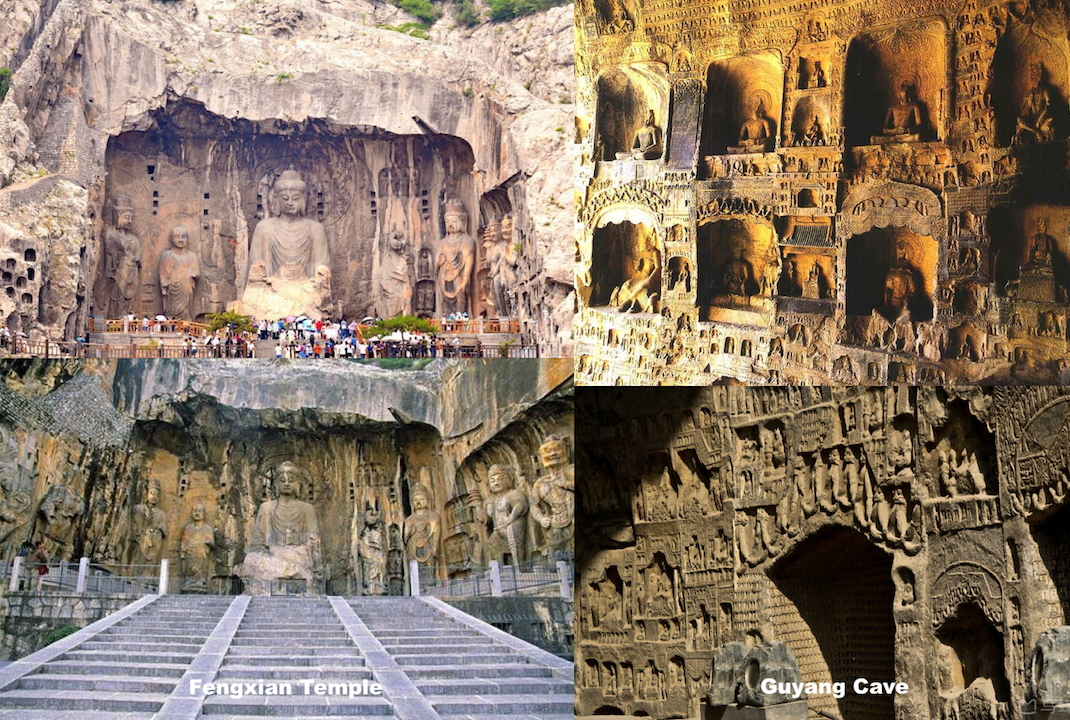
Three Binyang Caves
The Three Binyang Caves are Binyang Middle Cave, Binyang North Cave, and Binyang South Cave. To commemorate his father - Emperor Xuanwu and his mother - Empress Dowager Wenzhao, Emperor Xiaowen made the decision to erect three caves. However, after 24 years of construction, only the Bingyang Middle Cave was completed during the Northern Wei Dynasty. While the other two caves were completed successively during the Sui and Tang Dynasties. Among the three caves, the middle cave is the most prominent because of its magnificent artwork.
Wanfo Cave
Completed in 680, Wanfo Cave or Ten Thousand Buddha Cave is a representative chronological cave of the Tang Dynasty with a front room, a back room, and a lotus caisson carved ceiling. It houses over 15,000 tiny statues of Buddha carved in its south and north walls, hence the name. All the statues are with different facial expressions, gestures, and shapes. Among the status, there is the main Buddha Amitabha who sits on a lotus base supported on a Sumeru throne. Behind the Buddha Amitabha, there are 54 lotus flowers carved on the wall, each of which sits on a Bodhisattva.
Yaofang Cave
If the scene of myriads’ Buddhas shows too much for you, the Yanfang Cave (“Yaofang” means medical prescription) can certainly heal what ails you. The cave contains over 140 medical prescriptions of the period from the late Northern Wei to the early Tang Dynasty. Inscribed on both sides of its entrance, they recorded the treatments for a wide range of diseases and illnesses, involving the treatments for infectious diseases and mental disorders. These original stone-carved prescriptions play an important role in the study of Chinese medicine.
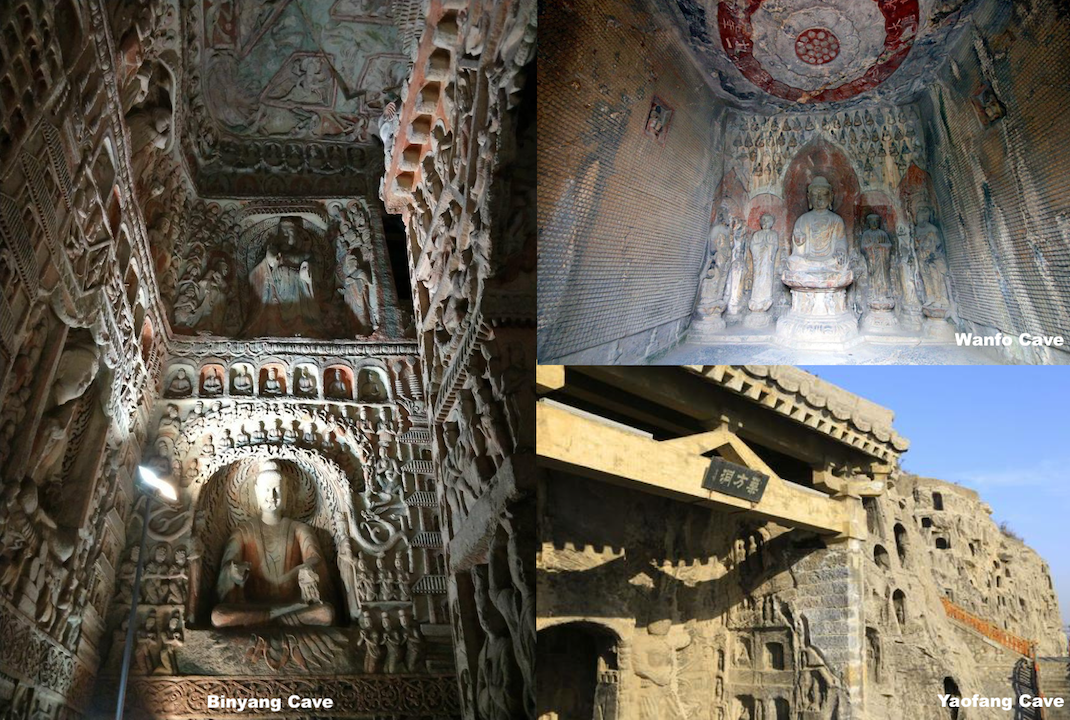

Recommended visiting route in Longmen Grottoes
We would recommend following a one-way visiting route: The North Gate - Caves on the West Hill - Cross the Manshui Bridge - Caves on the East Hill - Xiangshan Temple - Baiyuan Garden. For travelers with limited time, it's better to focus sightseeing at the caves on the West Hill and take a boat (¥ 25) back to the main entrance to get a riverside view and a superb panoramic view of the caves.
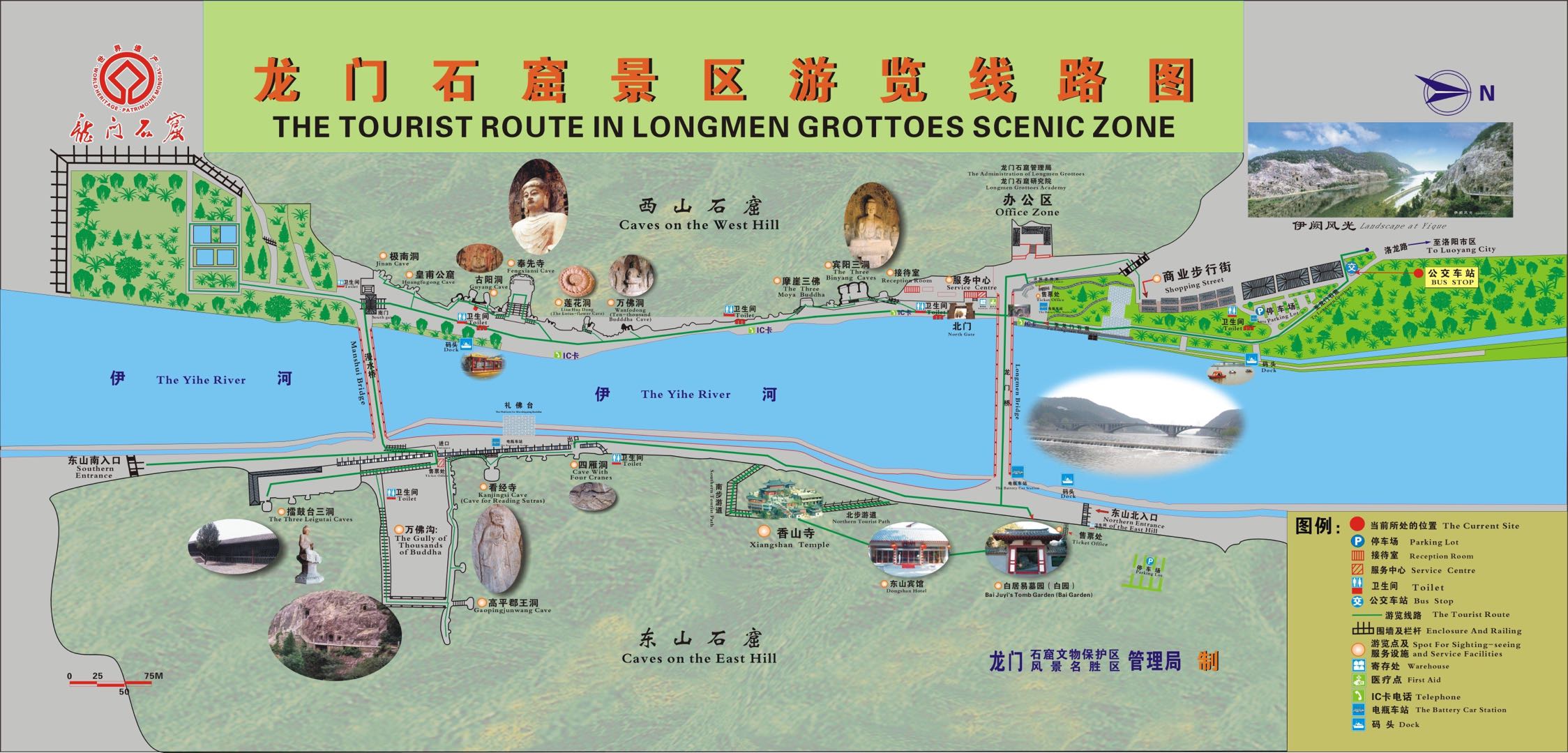

How to get to Longmen Grottoes
Longmen Grottoes are 15km away from Luoyang downtown, which takes about 30 minutes drive. Most independent travelers choose to take a taxi to get there, which takes about ¥30. It can also be reached by bus 81 (¥1.5, 50 minutes) for travelers arriving at the long-distance bus station on Jiguyuan Street by long-distance bus; or bus v9/71/99 for travelers who are arriving at the Luoyang Longmen Station by high-speed train. A taxi from Longmen station will cost ¥15. On the way back, as there are few taxis, be ready to bargain or take the bus. For family travel with kids or seniors, hiring a private car through a local China travel agency is the best choice to have a more comfortable journey.

Useful travel tips
- Visiting Longmen Grottoes at night can be a unique and wonderful experience, but it is only available by being arranged with a travel agency.
- Audio guides in different languages (such as Chinese, English, Japanese, Korean, and Cantonese) are available to rent at a cost of CN¥ 20 each.
- Electromobiles are available to rent from 08:30 to 17:00 to help those who want to shorten the walking distance. Each charge CN¥ 20 per person.
- Free luggage storage is offered until 17:30, but only for luggage that is smaller than 20L.


